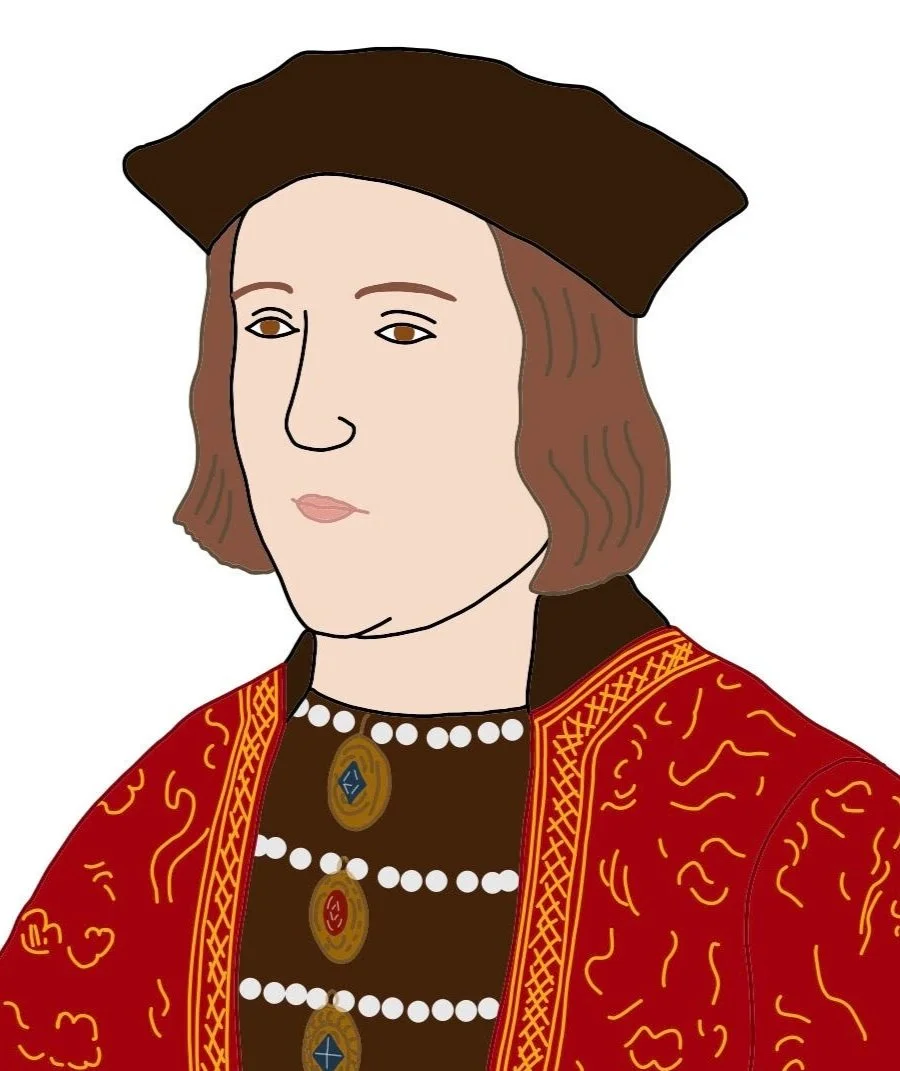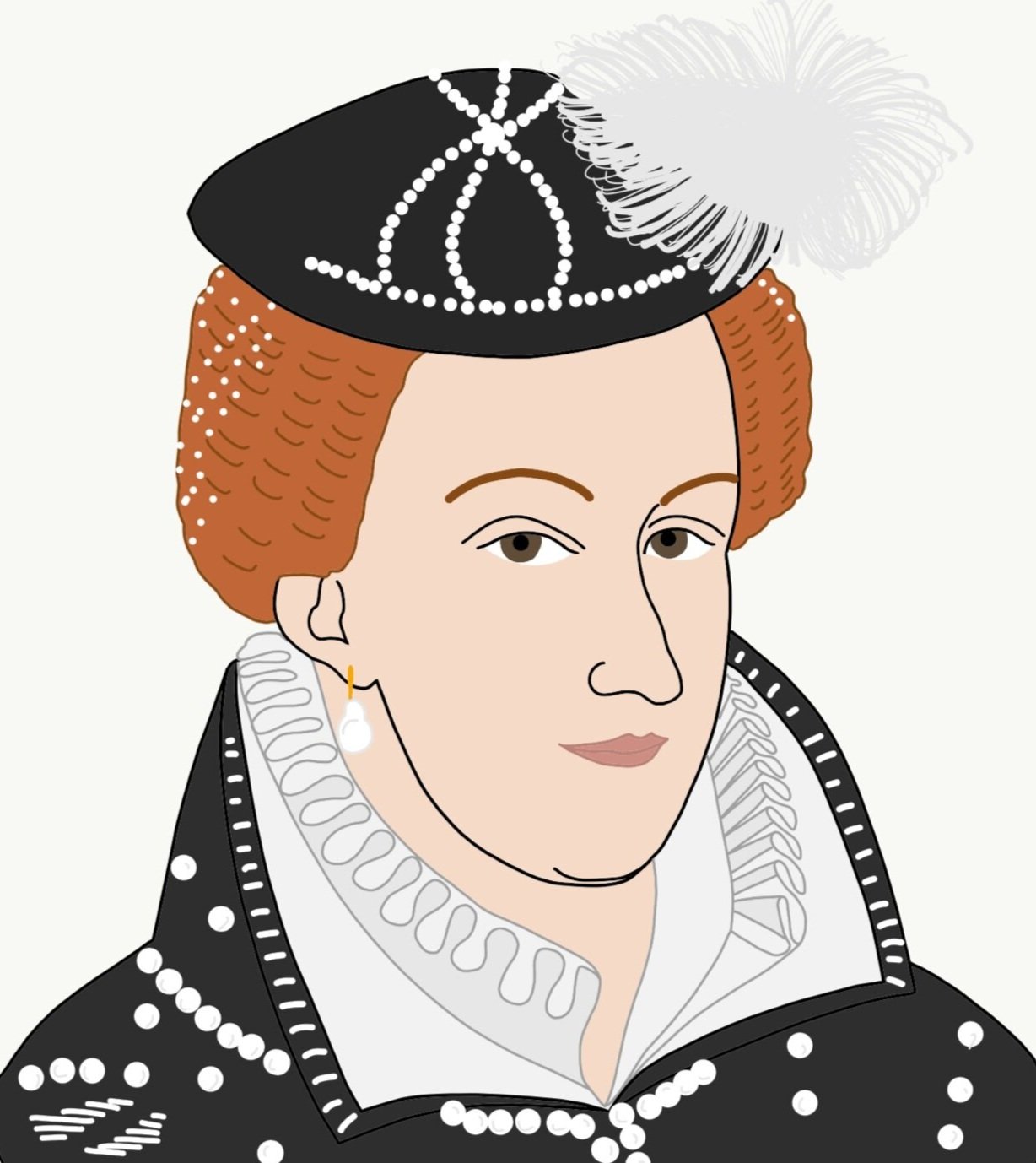July 25th - 31st
“The perfect week for a royal wedding - three of them were Tudor weddings whilst the fourth was a little more recent...”
On 25th July…
Queen Mary I marries Prince Philip of Spain
1554 - Queen Mary I, the eldest daughter of Henry VIII, married Prince Philip of Spain at Winchester Cathedral. Mary was ten years older than Philip and the marriage was not a happy one. They never had any children and Philip spent most of his time abroad.
1920 - Rosalind Franklin, a British scientist and the co-discoverer of the structure of DNA was born in London.
On 26th July…
796 - King Offa of Mercia, a powerful Anglo-Saxon king, died. He is famous for introducing coins bearing the king’s name and title and for the construction of Offa’s Dyke. The dyke is an earth wall and ditch barrier which ran for 140 miles along the borders of England and Wales built as a means of stopping the Welsh from raiding his lands.
King Edward IV defeated at Edgecote Moor
1469 - The Battle of Edgecote Moor took place between the Earl of Warwick (Richard Neville) and King Edward IV in the Wars of the Roses. The Lancastrian forces led by Richard Neville the Earl of Warwick (also known as the Kingmaker) defeated Edward’s Yorkist troops and shortly after captured King Edward IV. The king was held captive for only a short time before being released. Richard was formally a friend and ally of King Edward IV, as the saying goes - ‘With friends like that, who needs enemies?’
On 27th July…
King William III defeated by Jacobites
1689 - Battle of Killicrankie saw the Scottish Jacobite Highlanders in support of the deposed catholic King James VII and II defeat the troops supporting the protestant King William III of England and Scotland (also known as William of Orange). William was married to King James’ daughter Mary; both he and his wife had been asked to take the English and Scottish throne when James VII and II was ousted because of his devout religious standing. In other words he had become too Catholic. England welcomed William and Mary with open arms but there were tensions and bloodshed in both Scotland and Ireland following their ascension to the throne.
On 28th July…
Katherine Howard becomes the 5th wife
1540 - King Henry VIII of England married his fifth wife, Katherine Howard. Little did Katherine know that the marriage would not last long or that her fate would end on the executioner’s block.
Thomas Cromwell executed
1540 - Thomas Cromwell, the once trusted adviser and chief minister to King Henry VIII was executed on the king’s orders for treason and heresy. It took three blows of the axe before his head was cut clean from his body. He was executed the same day that Henry VIII married his fifth wife, Katherine Howard.
Beatrix Potter is born in London
1866 - Beatrix Potter, the English author and illustrator, was born in London. Her many stories include tales of Peter Rabbit, Squirrel Nutkin and Jemima Puddle-Duck.
1914 - World War I began when Austria-Hungary declared war on Serbia following the assassination, exactly one month earlier, of the Austrian Archduke Franz Ferdinand and his wife by a Serbian nationalist.
1943 - During World War II, in the space of 43 minutes in the very early hours of the day, Allied bombers rained down 2,326 tonnes of incendiary bombs onto the German city of Hamburg during Operation Gomorrah. The Operation lasted a week, around 42,000 German civilians were killed, and a further 37,000 wounded, in the fires that engulfed the city reaching temperatures of 800C (1,500F).
On 29th July…
Mary, Queen of Scots marries her cousin
1565 - Mary Queen of Scots, married her cousin, Henry Stuart, Lord Darnley. The marriage resulted in the birth of King James VI and ended with the still unsolved murder of Lord Darnley in 1567.
1981 - Prince Charles married Lady Diana Spencer at St Paul’s Cathedral in London. The ceremony was watched by over 700 million people around the world. Together they had two sons, Prince William and Prince Harry.
On 30th July…
1818 - Emily Bronte was born in England. Emily had two sisters: Charlotte and Anne. All three sisters were poets and writers. Emily wrote only one novel - Wuthering Heights.
1900 - The Central London Railway was opened by the Prince of Wales, the future King Edward VII. The line ran from Shepherds Bush to Bank and is now part of the Central Line of the London Underground.
1914 - Reluctantly Russia backed Serbia at the beginning of World War I. The Russian leader, Tsar Nicolas II, is reported to have said, “Think of the thousands and thousands of men who will be sent to their deaths.”
Happy 87th Birthday to the paperback book
1935 - The first paperback books were published by Penguin. They cost sixpence and were colour coded: orange for fiction, blue for biography and green for crime.
On 31st July…
1737 - Prince Frederick of Wales, fled Hampton Court Palace with his wife who was in labour with their first child. There was no fire or emergency at the palace, the Prince just didn’t get on with his dad, King George II, and did not want him to be present at the birth. It was the tradition for the monarch to watch the birth of any children or grandchildren, there was usually also more than several other witnesses to the birth to make certain that the baby was really born of the mother and to ensure there was no swapping of infants should the baby be stillborn. Neither King George II nor his wife, Queen Caroline, got on with their eldest son, Frederick.
1914 - The German leader, Kaiser Wilhelm II, threatened war in response to Russia’s support to its ally Serbia and ordered Russia to demobilise its military. This was the eve of World War I.







